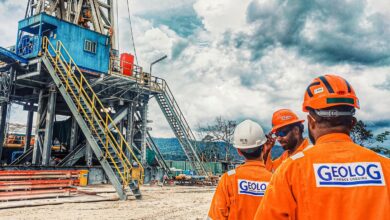Diamond Offshore shifting fleet to meet deepwater, ultra-deepwater demands
By Joanne Liou, editorial coordinator

Supported by dayrates hovering around $600,000 and increasing rig demand from frontier areas, the ultra-deepwater market continues to push contractors, such as Diamond Offshore Drilling, to reposition its fleet to capitalize on this healthy market. The deepwater basins of the US Gulf of Mexico (GOM), Brazil and West Africa have traditionally driven offshore rig demand; however, over the past four years, emerging markets, including Mexico, East Africa and Australia, have added to the demand with a wealth of successful exploration activity, Michael Acuff, senior vice president, contracts and marketing, Diamond Offshore Drilling, said at the 2012 IADC Annual General Meeting in Scottsdale, Ariz., on 8 November.
Diamond Offshore, which has divested six jackups over the past eight months, has been moving to focus its fleet on deeper waters. In the last four years, the company has invested approximately $4.2 billion in new rig capacity, which includes four ultra-deepwater drillships expected to enter the market in 2013 and 2014. All four drillships are of the Hyundai P10000 design, capable of drilling in up to 12,000-ft of water and drilling down to 40,000-ft, with dual activity capabilities and dual seven-ram BOPs.
In addition, Mr Acuff noted that attractive shipyard pricing in South Korea and Singapore is driving contractors to bring additional capacity to market, particularly in view of positive dayrate trends and contract terms, which are running from three to 10 years for ultra-deepwater units. In the near term, Mr Acuff believes ultra-deepwater rigs will remain in shortage; by 2014, however, a significant number of rigs are expected to enter the market, which could put it back in more balance.
For the more conventional deepwater market, where dayrates have jumped from approximately $300,000 to $500,000 over the past 12 months, Diamond Offshore also is building two 6,000-ft capable semisubmersibles featuring Victory-class hulls. The Ocean Onyx, scheduled for delivery in Q3 2013, is already contracted to Apache in the GOM, and the Ocean Apex is scheduled for delivery in Q2 2014.
The mid-water market remains attractive, too, particularly in the UK and North Sea, Mr Acuff said. In most of the rest of the world, this market segment is moving at a stable pace, but the UK and North Sea mid-water market is experiencing an increase in demand similar to the ultra-deepwater markets. “It’s sold out,” Mr Acuff said. “The first available is in 2014, and we have operators lining up to get rig capacity or to see what we can do to solve their issues about bringing in new rig capacity into the market.”
Challenges moving forward
Given the number of floaters and jackups that are under construction industrywide, it’s estimated that industry will need about 20,000 new people in the next two years. Putting the number in perspective, Mr Acuff noted that Diamond Offshore has about 4,500 offshore employees, so essentially, industry will need to create about four Diamond Offshores in the next two years to meet the overall demand.
Diamond Offshore alone expects to add about 875 people to its offshore work force for its newbuilds. Besides promoting from within to fill the newer positions, the company also is recruiting a significant number of new people into the organization and has tapped into human resources in Eastern Europe. “We’ve recruited from Romania, targeting degreed engineers and ex-marine and mechanical people who we’ve identified there and brought them into a special international subsea training program,” he explained.
Some Diamond Offshore employees are being pulled off of their current rigs six months in advance of transferring to a newbuild to provide additional training and supplementary courses, Mr Acuff said. To meet the need for training, the Diamond Offshore Ocean Technology Center, a 31,000-sq-ft facility in Houston, will open in Q1 2013 and will feature simulators ranging from crane operations to cyber drilling training. At full capacity, the company expects the facility will be able to train up to 1,600 people a year.
Another challenge Mr Acuff noted is the uncertainty of regulations. Will there be additional BOP requirements? What impact will they have on the existing fleet? Will it have an impact on the newbuild rigs? are all questions on contractors’ minds. Additionally, the timing for regulatory compliance could be a difficult task given the fully loaded supply chain today, Mr Acuff commented.




